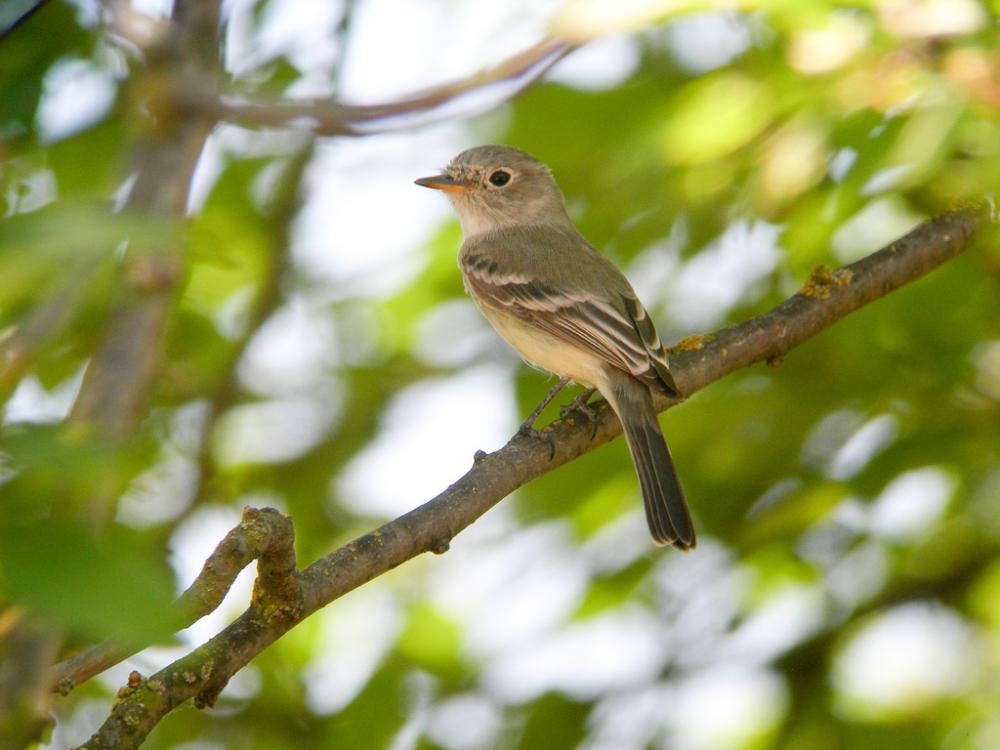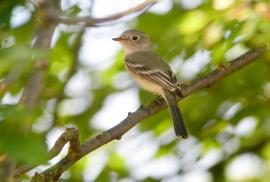Guide to Boreal Birds
Overview
Hammond's and Dusky flycatchers, very similar in appearance and voice, are closely related and difficult to distinguish. The populations were probably separated when the ice fields of the North advanced and the forests were divided into western and eastern refuges. When the flycatchers returned to the newly forested northern half of the continent, each had developed differing habitat needs, allowing them to coexist without competing for nesting sites and food. The Dusky usually nests in the lower ranges of the forest, preferring chaparral; the Hammond's chooses higher levels of tall fir trees.
Description
5 1/4-6" (13-15 cm). Back gray with slight olive tinge; breast buffy, with light throat; belly very pale yellow. Narrow white eye ring and white wing bars; long tail.
Voice
Song similar to that of Hammond's Flycatcher: a staccato series of chirps, transcribed as se-lip, churp, treep. Call is a sharp whit.
Nesting
3-5 white eggs in a neat twiggy cup set low in the crotch of a shrub or small tree.
Habitat
Woodlands containing tall trees and tall undergrowth, mountain chaparral, and open, brushy coniferous forests.
Range/Migration
Breeds from British Columbia and western South Dakota south to southern California, central Arizona, and northern New Mexico. Winters south of U.S.-Mexico border, rarely in southern California.



